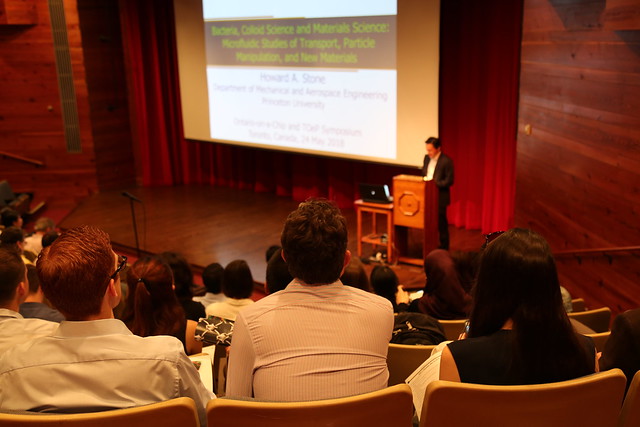June 6, 2018 – From paper-based microfluidic biosensors for disease diagnostics, to developing large tissue regeneration: U of T was the hub for knowledge sharing on microfluidics, from May 24-25.
The 13th annual Ontario-on-a-chip (OOAC) Symposium featured talks and poster presentations on the latest advancements in microfluidics and lab-on-a-chip technologies. The symposium was organized by Professors Edmond Young (MIE), Scott Tsai (Ryerson University) and Milica Radisic (IBBME/ChemE).
One of the highlights of this year’s program included a keynote lecture from Professor Howard Stone of Princeton University. Professor Stone presented on his group’s work in understanding bacterial motility in flow environments. He also touched on their use of “diffusiophoresis” – generating electric fields by using two solutions of electrolytes of different concentrations – to separate particles in flow, which generated a lot of discussion over the two days.
OOAC also featured overviews of emerging topics in the field. This included talks on the journey from cells in microchannels to organ-on-a-chip technology, given by Professor Sabeth Verpoorte (University of Groningen), as well as developing various complex organs-on-a-chip, including a blinking eye, presented by Professor Dan Huh (University of Pennsylvania). In the same vein, Professor Ravi Selvaganapathy (McMaster University) shared his work on developing tools and materials for low-cost bioprinting.
In addition to a great program of keynote and invited speakers, student presentations and posters are at the core of the symposium. This year, MIE postdoctoral research fellow Jae Bem You, who researches in Professor David Sinton’s lab, won the Lab on a Chip sponsored Top Poster Prize for his poster on isolation and immobilization of single sperm cells for motility and genetic analysis.
